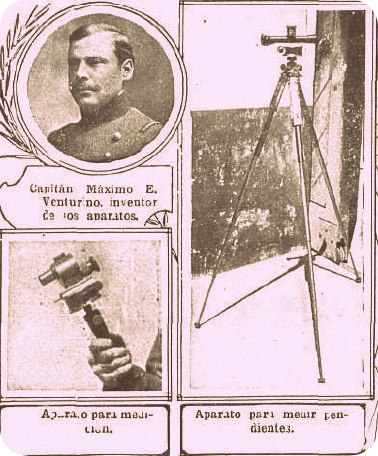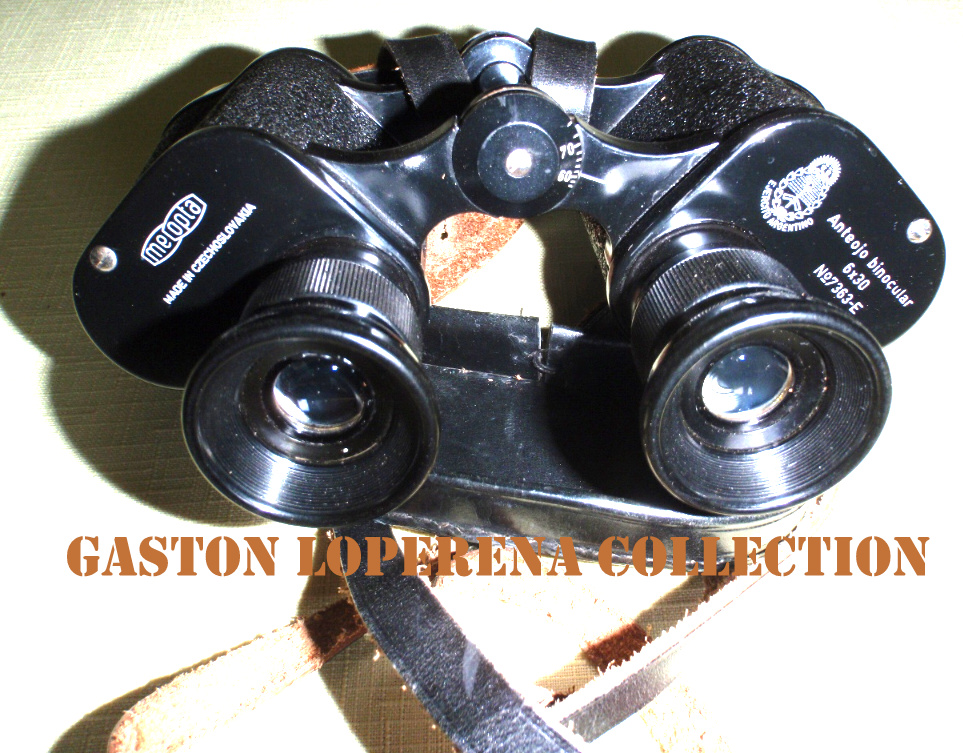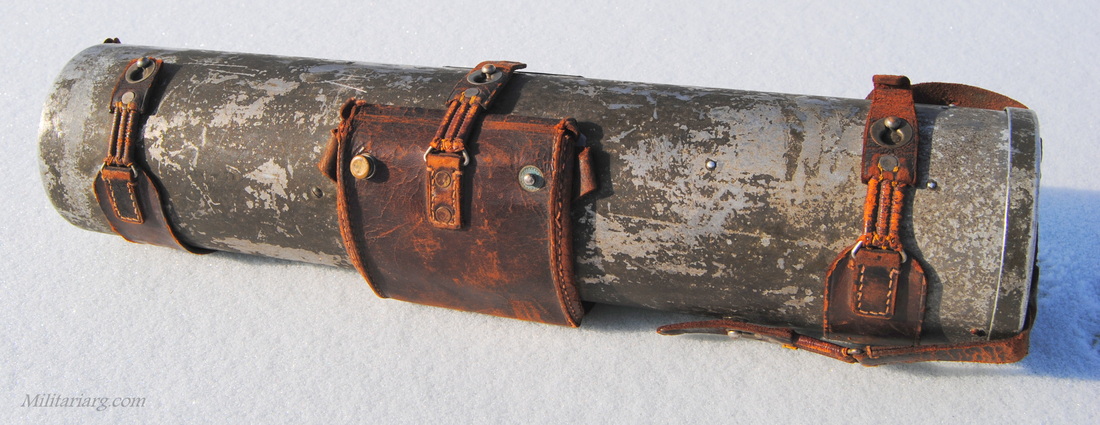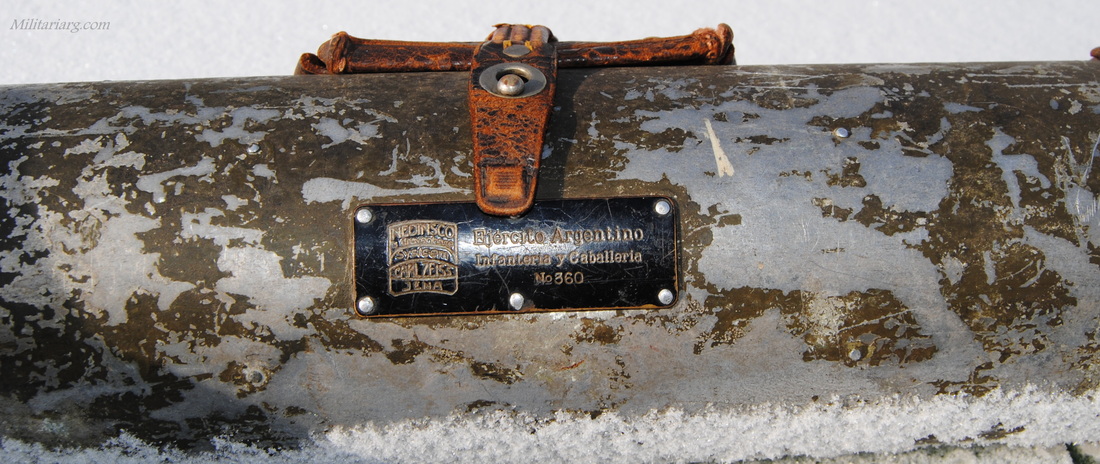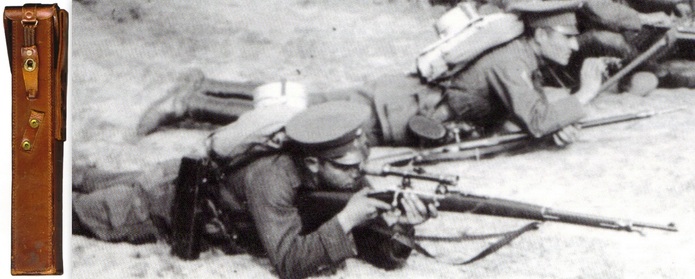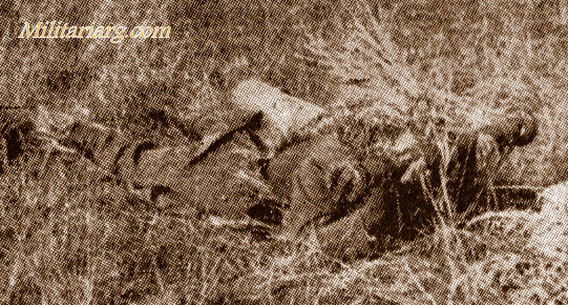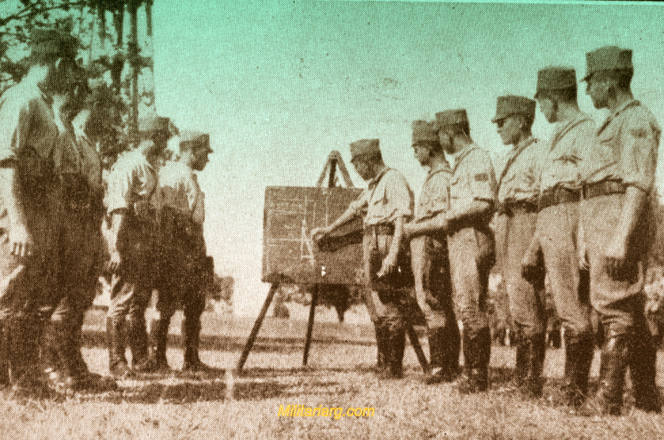CMN Cadets. Training with Bofors 75mm and Cael Zeiss Telescopes. 2X 12º ?
Soldados 1848-1927/Editorial Fundacion Soldados
Optical sight devices, equipments , gonometric, telemetro, ranger finder, periscope, range indicator. Measuring instruments for anti-aircraf and field artillery use.
Source: Generalidades sobre materiales y empleo de la artillería antiaérea".
Rev. del Suboficial. Nro 232. Junio 1938. Leutnant.
Rev. del Suboficial. Nro 232. Junio 1938. Leutnant.
OPL Rangefinder for artillery, 3mts base. The rangefinder (telemetro in Spanish) is a device that measures the distance to a target. They came into popular use in the 19th century when trigonometry was used to make the measurements. Nowadays laser and radar are the norm in rangefinders.
Kommandogerät 4-meters base rangerfinder
Flak-Beobachtungsgerät 1 with an 8x60 Porro II binocular. The Flak-Beobachtungsgeräte must have been used in search light units, or at least that is what they were designed for. Many thanks to Peter De Laet for sharing his knowledge with us.
These are German 6x30 Carl Zeiss Jena binoculars "Jena", made in 1936. There are very few of these in the Argentine Army and they are a very rare model for having been signal corp and for being only Jena. The majority of the ones from the Argentine Army are Nedinsco, Carl Zeiss under license in Holland. They were made in the late 20s. In reality, the Nedinsco were the same quality and materials.
This binocular, of the prestigious Czech brand Meopta, was also provided to the EA. Its incorporation was before the year 1959. With the manual "Elementos de Observación" of that year, it figures as one of the most modern within the EA, along with the Swiss Goette 6x30. Its crystals were anti-reflection.
Many thanks to Gaston Garcia Loperena for sharing his expertise with us.
Original binoculars and case from the Argentine military in the 1940s. The photo in the middle is a recreation.
Argentine Infantry & Cavalry Invert-Telemeter, marked Carl Zeiss Jena
German Nedinsco-Carl Zeiss (jena) 4x31, French 3x30 SOM (1891 Mauser) and japanese 4x33 SUWA civilian scope, (Light Optical Works Ltd.) scopes.
Left: Nedinsco scope's leather case. Right: Argentine infantryman with a model 1909 fitted with a Nedinsco Carl Zeiss 4x31 sight. Source Argentine Mauser Rifles 1871-1959 by Colin Webster.
ZEISS JENA Scope 6 x 42.
NVG Night Vision Goggles, (AN/PVS-2 ; AN/PVS-5)
"Starlight", AN/PVS-2 Gen 1.
Mounting piece designed for M14’s and M16’s
PVS-5A/B Generation-2 Night Vision Goggles.
Flashlight
FULTON N47 right-angle flashlight.
Rangefinder Scope, 1m R-36. 6th Regiment Infantry of Mercedes (1939)
Telemeter German made, ex-Argentine) for target.
http://thedonovan.com/archives/cat_general_militaria.html
http://thedonovan.com/archives/cat_general_militaria.html
Rangefinders from 1st Infantry Regiment Patricios, (1944)
Wetzlar Carl Zeiss. Binocular trench telescope-periscope type ranging optics.
Range finder and case.
Range finder. Carl Zeiss Jena Entfernun (?)
Sight carrier device (?)
5th Mountain Detachment, (Covunco Centro Neuquen) 1955.
Scherenfernrohr :Trench binoculars/periscope/stereoscopic; "Scissors telescopes; Rabbit Ears" Carl Zeiss.
ARTILLERY FIRE CONTROL
Surveying, optical-calibration, instruments. Fire directors, clinometer and oscillating sight and other optical artillery equipments sight carriers or mount on tripodes, etc.
Photos: Artillery School, May Field 1945/48
Azimuth Finder for surveillance thopographical work (?)
Optical director.
Telescope optical director. It was mounted on a tripod.
Artillery spotting telescope
Parallelescope (?)
6Th Infantry Regiment. Mercedes 1939.
Heliograph
6Th Infantry Regiment 1944. Gral Viamonte.
Mountain Troops
Orientation Equipment: Maps and Compass in Land Navigation.
Original Compass (Cruchon & Emons), from the Argentine Military, used until the 1980s.
No 3 MK 7 AA Radar. Photo: Wikipedia.
The Eye of the Flak - Das Auge der Flak
by Dr. Peter De Laet and Francis Vermeire
Volume I of "The Eye of the Flak - Das Auge der Flak" by Dr. Peter De Laet and Francis Vermeire.
The first part of a trilogy on German World War II Flak optics with emphasis on the 10 x 80 45° Flakfernrohr. In volume I the authors have approached the world's most produced high aperture military binocular from both its historical and functional perspective, in an attempt to give the 10 x 80 its rightful place in optical and military history. This work is the result of 10 years of research by the authors.
Click above to access the book's website.
The first part of a trilogy on German World War II Flak optics with emphasis on the 10 x 80 45° Flakfernrohr. In volume I the authors have approached the world's most produced high aperture military binocular from both its historical and functional perspective, in an attempt to give the 10 x 80 its rightful place in optical and military history. This work is the result of 10 years of research by the authors.
Click above to access the book's website.


